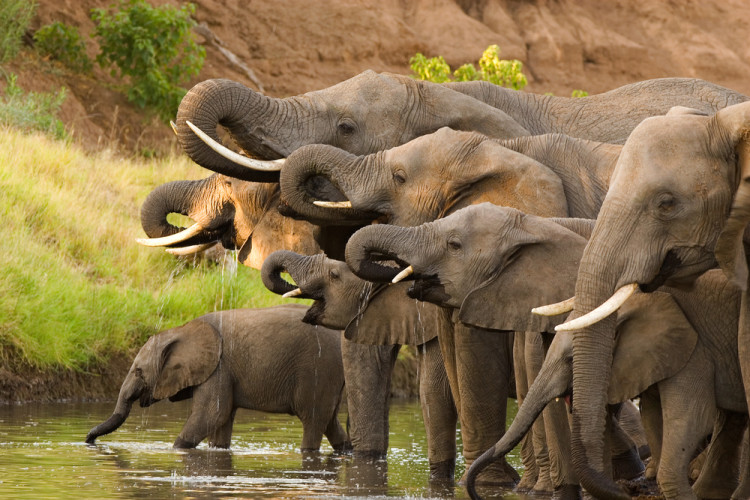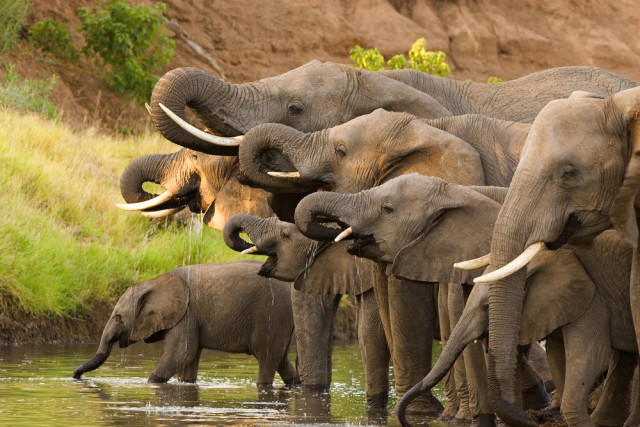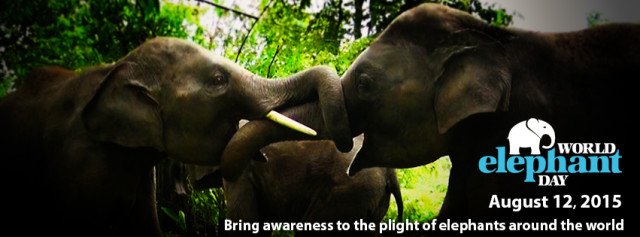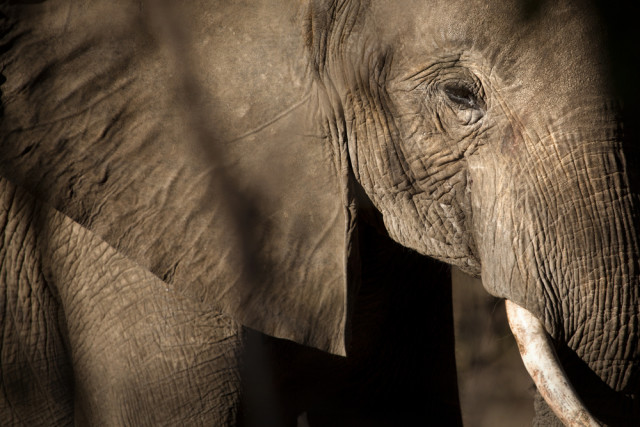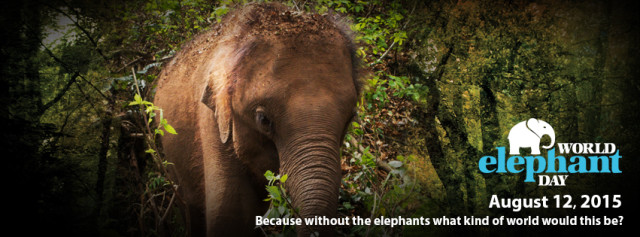Image via Shutterstock
BY VICTORIA GAFFNEY
The elephant is one of the most beloved creatures on earth. Many cultures revere them for their enormous strength—their imposing gray forms, regal tusks, and powerful trunks, which can pull whole trees from the ground. But their large floppy ears, endearing wrinkles, and soft, intelligent eyes also remind us of their gentle, empathetic natures. John Donne once reflected, “Nature’s great masterpiece, an elephant; the only harmless great thing.”
Despite worldwide admiration for these magnificent mammals, elephants face serious threats that, if left unaddressed, could rob the planet of their graceful presence. From poaching—for the illegal ivory trade, meat, and body parts—to habitat destruction, human-elephant conflict, and mistreatment in captivity, the plight of elephants has become dire.
In response to these threats, the Elephant Reintroduction Foundation and Patricia Sims—Producer and Director of CanazWest Pictures Inc.—founded World Elephant Day as a day for people to show their concern for elephants, to become “elephant educated” and exchange information with each other, and support policies seeking to protect and improve the lives of elephants. The first World Elephant was on August 12, 2012.
Today, we honor World Elephant Day by spreading awareness about these magnificent creatures, the cause, and what you can do to show your support.
Image via WorldElephantDay.org Press Room page
THE AFRICAN AND ASIAN ELEPHANT
The number of elephants in the world has decreased by 62% over the last decade. It is estimated that every day poachers kill 100 African elephants and only 400,000 are left today. One of the main culprits is the illegal ivory trade where the demand for ivory products is extremely high (China’s ivory prices tripled from 2010 to 2014). Bull elephants, which are male, are the primary victims because of their large tusks, which can grow to be more than 11 feet long and weigh up to 220 pounds. Today, there are more than twice as many females as there are males. Poachers seek females for their tusks as well, which leaves young elephants without their mothers.
The Asian elephant is similar to the African elephant, but smaller (weighing about 10,000 pounds compared to the African’s 22,000) and the two can’t interbreed. Although the Asian elephant’s habitat spans more than 13 countries, there are less than 40,000 left in the world leaving them gravely endangered (for every 10 African elephants, there is only one Asian elephant, and for every three Asian elephants, one is in captivity). At the start of the 20th century more than 100,000 elephants roamed Thailand; today there are only 4,000. The chief threat to the Asian elephant is loss of habitat as humans continue to encroach on their homes. Humans and Asian elephants have coexisted and lived in close proximity for more than 4,000 years. Nonetheless, the two often fall into fatal conflicts with one another. The African elephant’s habitat is expansive and since they are larger than their Asian counterparts they are more equipped to defy capture. As with the African elephant, poachers seek Asian elephants for ivory, meat, and body parts (although tusks are only found in Asian males). The babies are seized for the tourism industry where they are frequently abused and severely mistreated without ample veterinarian attention. According to WorldElephantDay.org, telling research indicates that captive elephants suffer profound psychological damage (namely depression) and live shorter lives.
With a brain larger than any other land animal’s (11 pounds), the elephant remains a mysterious mammal. They are a keystone species, meaning that they play an integral role in their complex ecosystems. By maintaining their environments, elephants ensure that other species of animals and plants can flourish. As the World Elephant Day site says, to lose the elephant is to “lose an environmental caretaker” and risk “major habitat chaos and a weakening to the structure and diversity of nature itself.” Wildlife biologist and Ambassador for the UNEP Convention on Migratory Species, Ian Redmond, has said that elephant conservation plays an integral role in preventing climate change because “elephants disperse billions of seeds, some of which will grow into the forests of tomorrow, sequestering and storing carbon, generating rainfall and stabilizing our climate. Save the elephants to save the forests to save the world!”
Image via Shutterstock
THE ELEPHANT REINTRODUCTION FOUNDATION
One of the cofounders of World Elephant Day is the Thailand nonprofit, Elephant Reintroduction Foundation, which focuses on ensuring the lasting presence of elephants in the world. As in many cultures, the elephant is sacred in Thailand and is a national icon (there is even a national holiday where the King can bestow a royal title on an elephant). Her Majesty Queen Sirikit of Thailand started the Elephant Reintroduction Foundation in 2002 seeking to rebuild the natural homes of elephants by reintroducing plants and animals, and reinstating captive Asian elephants back into their natural spaces. The organization also focuses on sharing information about Asian elephants so that others can learn and become more knowledgeable of their plight. Three forest sanctuaries in Thailand are part of The Elephant Reintroduction Foundation, and they have released 93 elephants back into the wild. Visit the foundation’s website and blog to read about the elephants and their forest sanctuaries.
RETURN TO THE FOREST
On the first World Elephant Day in 2012, CanazWest Pictures released the documentary “Return to the Forest.” In this film, William Shatner narrates the Elephant Reintroduction Foundation’s story of bringing elephants back to their homes and you can watch the documentary on World Elephant Day’s website. This fall, filmmakers Patricia Sims and Michael Clark will release their next film narrated by William Shatner, “When Elephants Were Young,” which takes place in Thailand and focuses on a young elephant and young man.
HOW TO SAVE ELEPHANTS
Elephant conservation groups strive to protect and conserve elephants in a number of ways. Many work to stop the poaching of elephants for the illegal ivory trade through legislation, others seek to maintain the elephants’ natural habitat, enhance captive elephant treatment, and help bring elephants to environmental sanctuaries. As WorldElephantDay.org tells us, we need to protect elephants through effective local and international policies, and we need to educate one another about the elephant, particularly it’s indispensable role in the natural world.
Image via WorldElephantDay.org Press Room page
WHAT YOU CAN DO
WorldElephantDay.org provides us with a number of ways to help and show our support on World Elephant Day and throughout the year. The Nature Conservancy invites us to create an #Elegram (a drawing or painting of an elephant) and upload it to an online gallery. They are seeking to 20,000 #Elegrams, a number that will be met by $150,000 dedicated to elephant preservation in Africa.
You can tweet #WorldElephantDay #BeHerd, obtain logos at WorldElephantDay.org’s Press Room, and become part of the STAMPede @96Elephants. You can host your own event on World Elephant Day, such as screening “Return to the Forest.” You can also show your support by abstaining from the purchase of ivory (working to decrease its high demand), learning about elephants (here are some fascinating facts) and the various efforts to protect and conserve them, visiting elephants in their natural environments through eco-tourism opportunities, and more. You can even do something as simple as signing a pledge to “support a world that protects elephants, wildlife and their habitat.”
“I have spent hours and hours watching elephants, and come to understand what emotional creatures they are…it’s not just a species facing extinction, it’s massive individual suffering,” says Dr. Jane Goodall. Take action now and help protect these marvelous, special creatures.
 ABOUT THE WRITER
ABOUT THE WRITER
Victoria Gaffney is currently pursuing an MA in Nonfiction Writing at Johns Hopkins in Washington D.C. She is a graduate of Haverford College where she majored in English and developed a passion for words and stories. She enjoys traveling and engaging with new people and perspectives, and relishes the thrill of late nights spent reading a new book or huddling in front of a computer screen to write. In her free time, she can be found drinking copious amounts of coffee, playing with dogs, practicing yoga and wandering around new streets without a plan. Victoria hopes to use writing to help impact positive change. Follow her on Twitter.
